DIY DAD 2591
New Member
Hi all, working on a bathroom gut and remodel. i have all but one more piece of cbu up and I'm almost ready to tape and mud the seams and apply redgard to the whole shower. my only question is what to do when it comes to the gap between the cement board and the shower pan nailing flange. in the pictures below the red line is the seam I'm talking about. removing the cement board and furring out the studs so the cement board can overlap the flange is not an option. listed below is the possible options i can see for this gap. what do all you fine folk recommend? anything i havnt listed?
option 1: silicone the gap and regard all the way down to it. will redgard adhere to silicone?
option 2: don't know if this is possible without removing all screws in cbu, but if possible, somehow pull the bottom of the cbu away from the studs and then put 6mill poly behind the cbu and drape into pan. then redgard all the cbu.
option 3: attach 6 inch wide waterproofing tape to the front of the cbu and drape it into the pan. redgard it all.
option 4: tape and mud this seam with thinset and alkali resistant tape like all my other cbu to cbu seams. redgard everything.
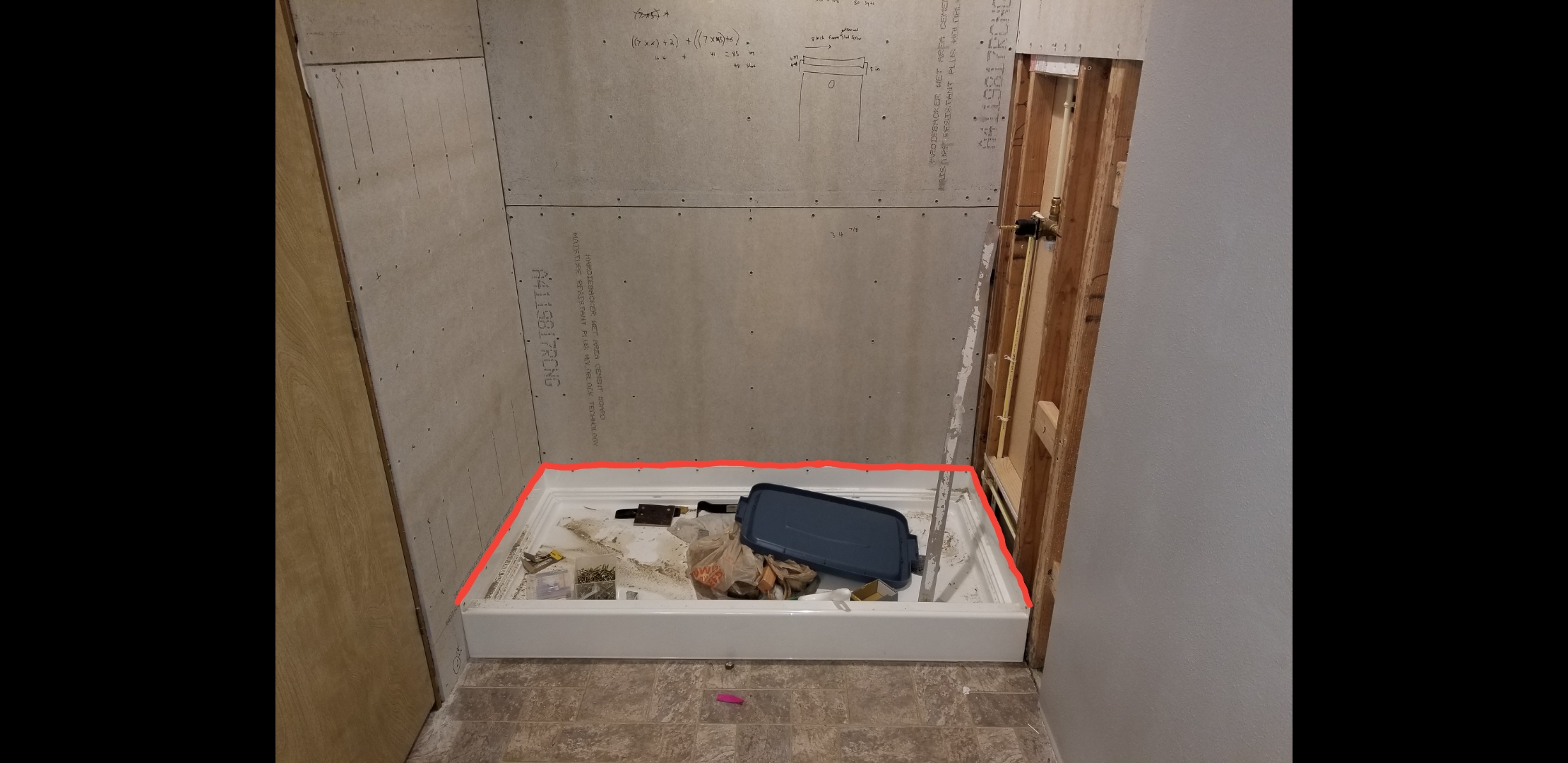
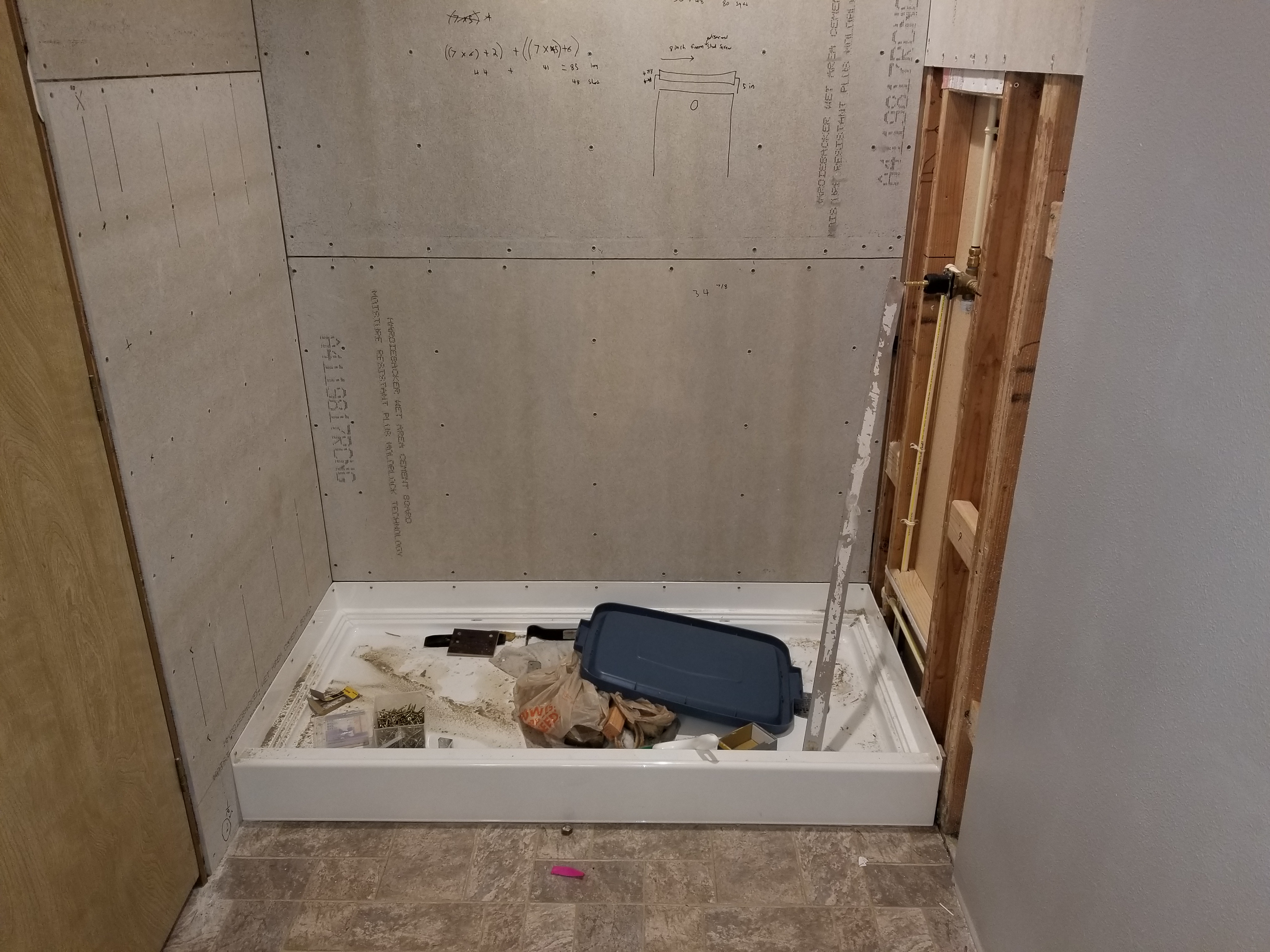
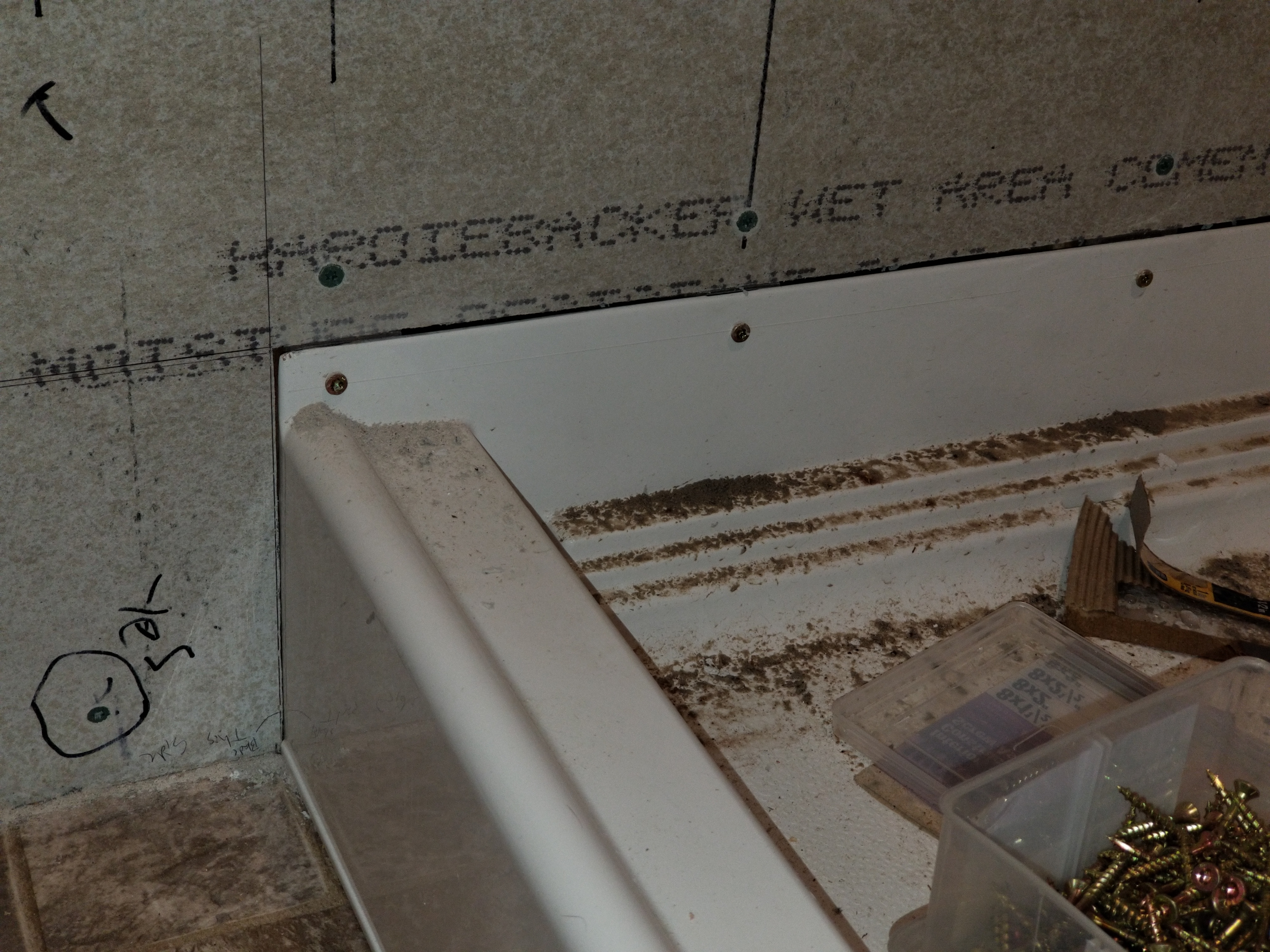
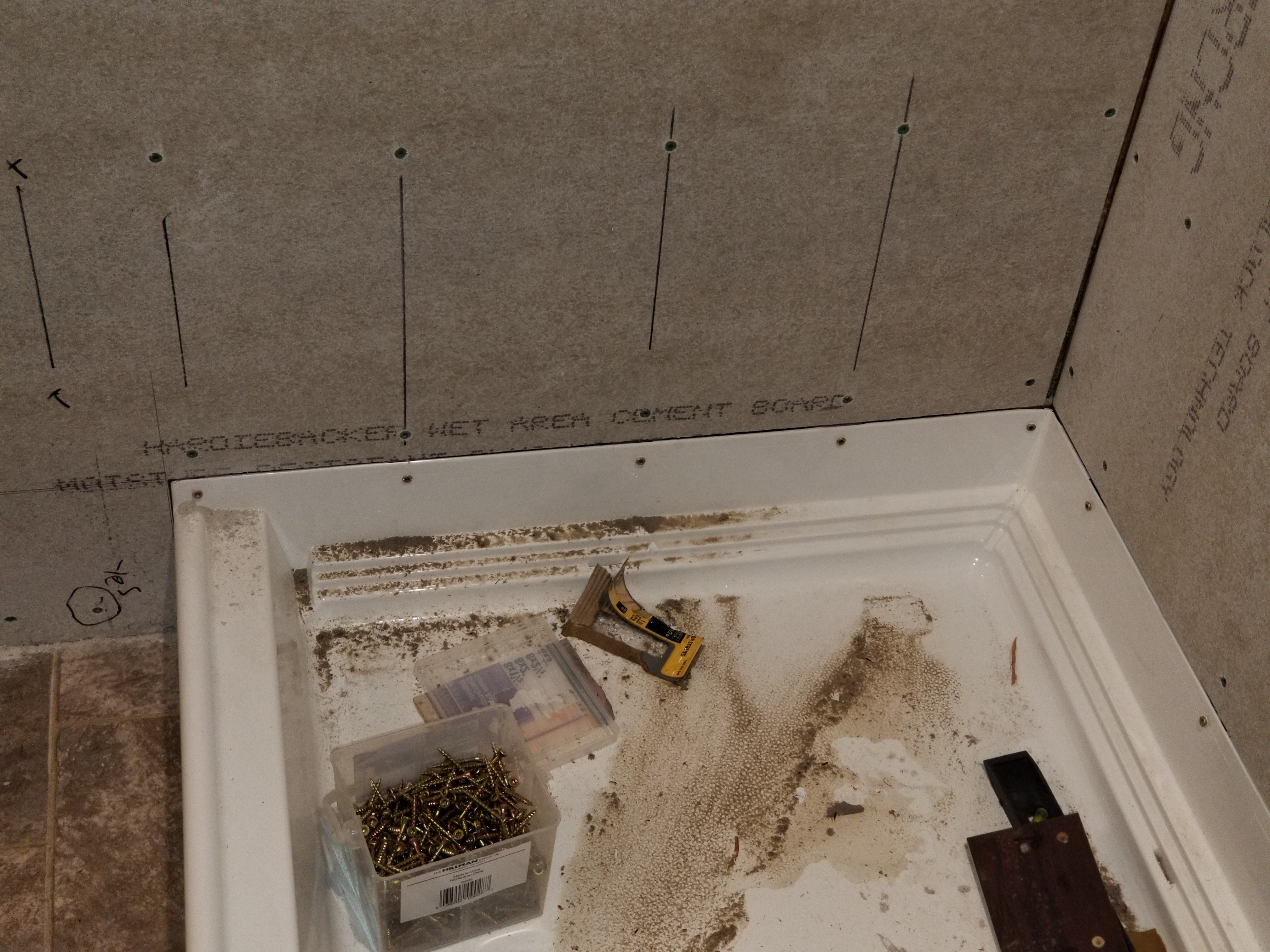
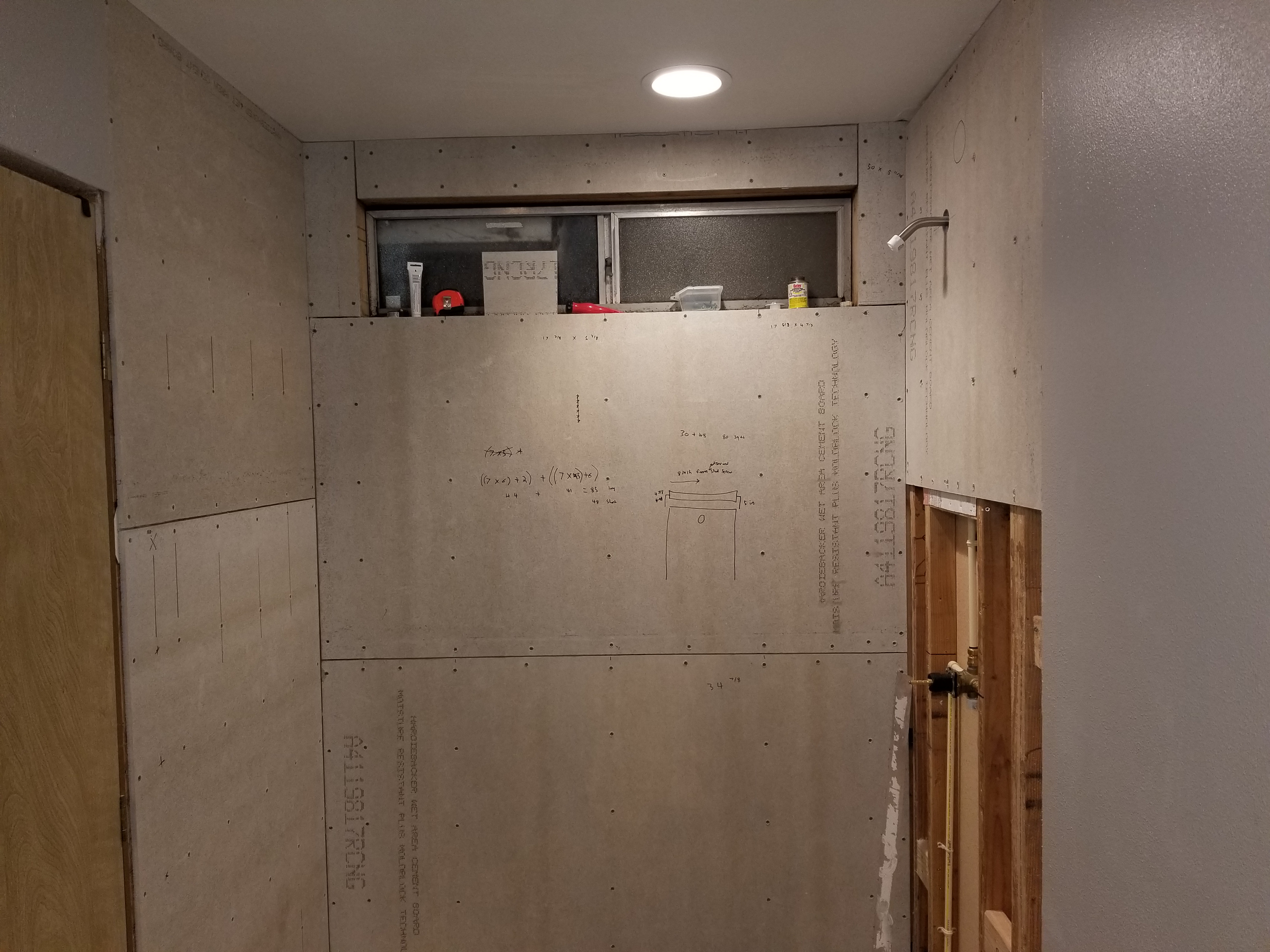
option 1: silicone the gap and regard all the way down to it. will redgard adhere to silicone?
option 2: don't know if this is possible without removing all screws in cbu, but if possible, somehow pull the bottom of the cbu away from the studs and then put 6mill poly behind the cbu and drape into pan. then redgard all the cbu.
option 3: attach 6 inch wide waterproofing tape to the front of the cbu and drape it into the pan. redgard it all.
option 4: tape and mud this seam with thinset and alkali resistant tape like all my other cbu to cbu seams. redgard everything.





